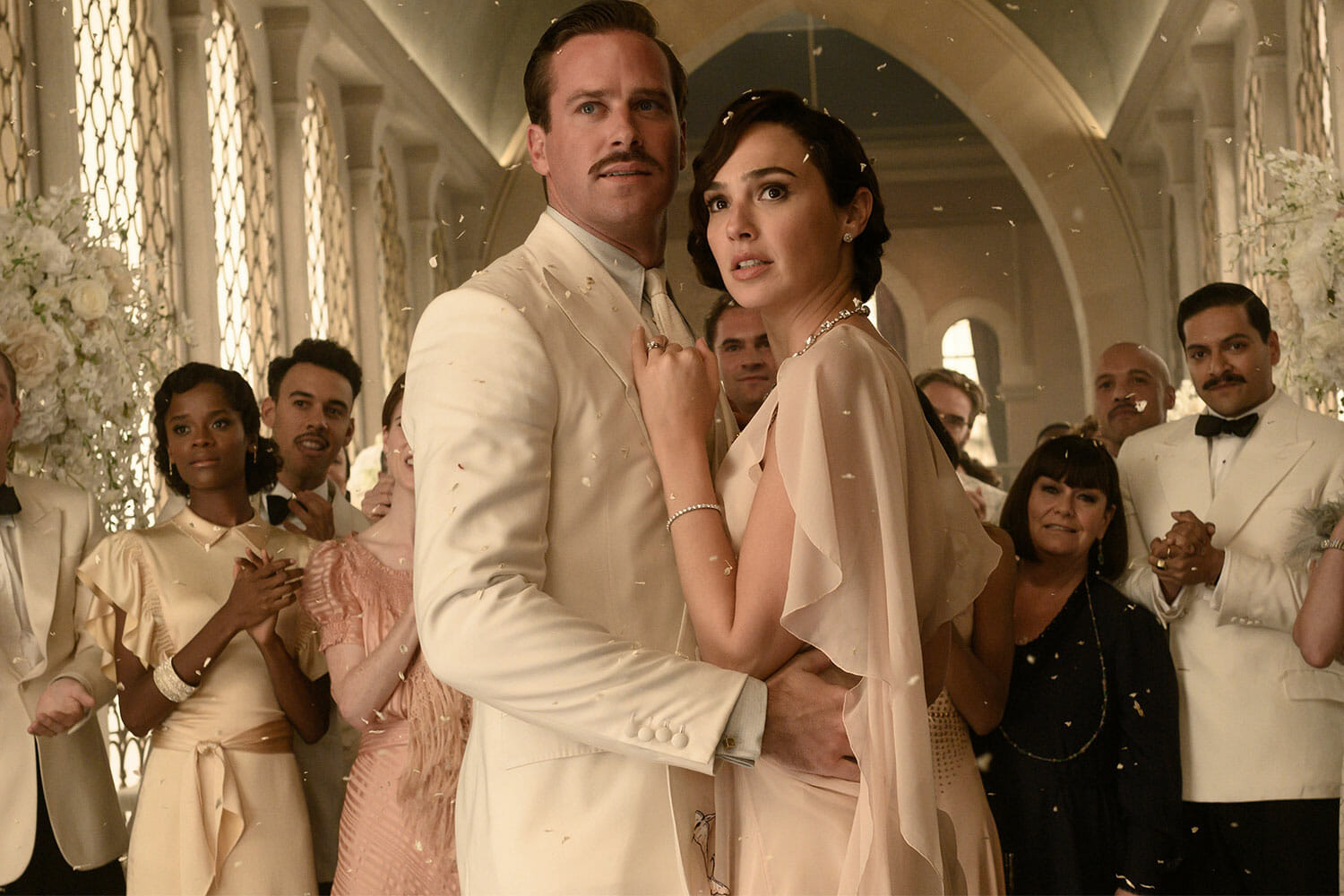Disney-owned Death on the Nile hews closely to the Agatha Christie novel, save for one notable exception: it begins with an origin story for detective Poirot’s mustache. It’s far more dramatic than your average mustache story—there’s war, explosions, heartbreak, and survivor’s guilt, each trauma a hair on the lip of Poirot’s soul. This silly bit of backstory seems innocuous at first, but keep in mind that director and star Kenneth Branagh wants to start an “Agatha Christie cinematic universe.” It may not be long before Poirot’s flashbacks become movies of their own.
But beyond that digression, Death on the Nile sticks to what worked (arguably) for Murder on the Orient Express. It’s a straightforwardly adapted Christie mystery with modern stylings and an all-star cast. Some of those stars have careened to the ground, however: between filming and release, one actor went anti-vaxxer, another caught flak for tacitly supporting apartheid, and a third was accused of cannibal-adjacent sex crimes. Forget Agatha Christie—Death on the Nile’s casting director has assembled more scoundrels than any author could write.
READ ALSO: Review: ‘Belfast’ is a surefire hit for audiences
You’d think the accused could milk controversy for drama, at least, but nearly every performance is tepid. Unlike other crimes, the humdrum isn’t necessarily the cast’s fault. The creative team hasn’t cracked the Christie adaptation yet. Like its predecessor, Death on the Nile struggles to balance faithfulness with its own identity: it condenses hundreds of pages without minimizing the big moments, but it rarely feels like a mystery worth telling in this form. Without the mask of prose, the actors wear their motives on their faces as they deliver Christie’s already suggestive monologues. Branagh is so absorbed in his caricature that he doesn’t seem to notice. And while the abridged story nails the broad strokes, it dispenses the details at too rapid a pace—you know a hint when you hear it, but without time to mull it over or flip back a few pages, it just flies by like Section 5.8 of a software agreement. It’s not an engaging puzzle, and you already saw the picture on top of the box.
Visuals are key to a movie’s identity too, of course, and in that sense, Death on the Nile is certainly trying. The camera is always up to something or other: weird angles, back-and-forth panning, faces fractalized by glass. The effort is so constantly conscious that it’s distracting. Sometimes these diversions are welcome— “ooh, that’s a cool shot!”—other times they’re baffling. Why are we spending so much of this shot staring at a boring white wall? That’s a question only a detective (and his DP) could answer. At least the cinematography is interesting, which is more than can be said for the film’s ghastly CGI. The setting looks glossily unreal. Death on the Nile is to Egypt what Jungle Cruise is to the Amazon—the movies even share a screenwriter! The man must love soundstages.
Death does manage to improve on Murder by winding tightly around one theme: love. There’s a lot of talk about the things love drives us to— “love will do that, you know” is the stock response to obsession, devotion, lust for murder, etc. The theme even gives an edge to Poirot, who may or may not deserve his loneliness. It’s all well and good conceptually, but in practice, it’s more bark than bite. Restrained by the constraints of rigid adaptation, the film leaves no time for all-consuming passion. The heat of romance invariably dissipates to make room for the next thing. This workmanlike approach to the whodunit made me miss the mustache flashback, oddly enough—it’s ridiculous, but it really goes for it, and I’ll remember it more fondly than the following two hours.
★★½ (2.5/5)




